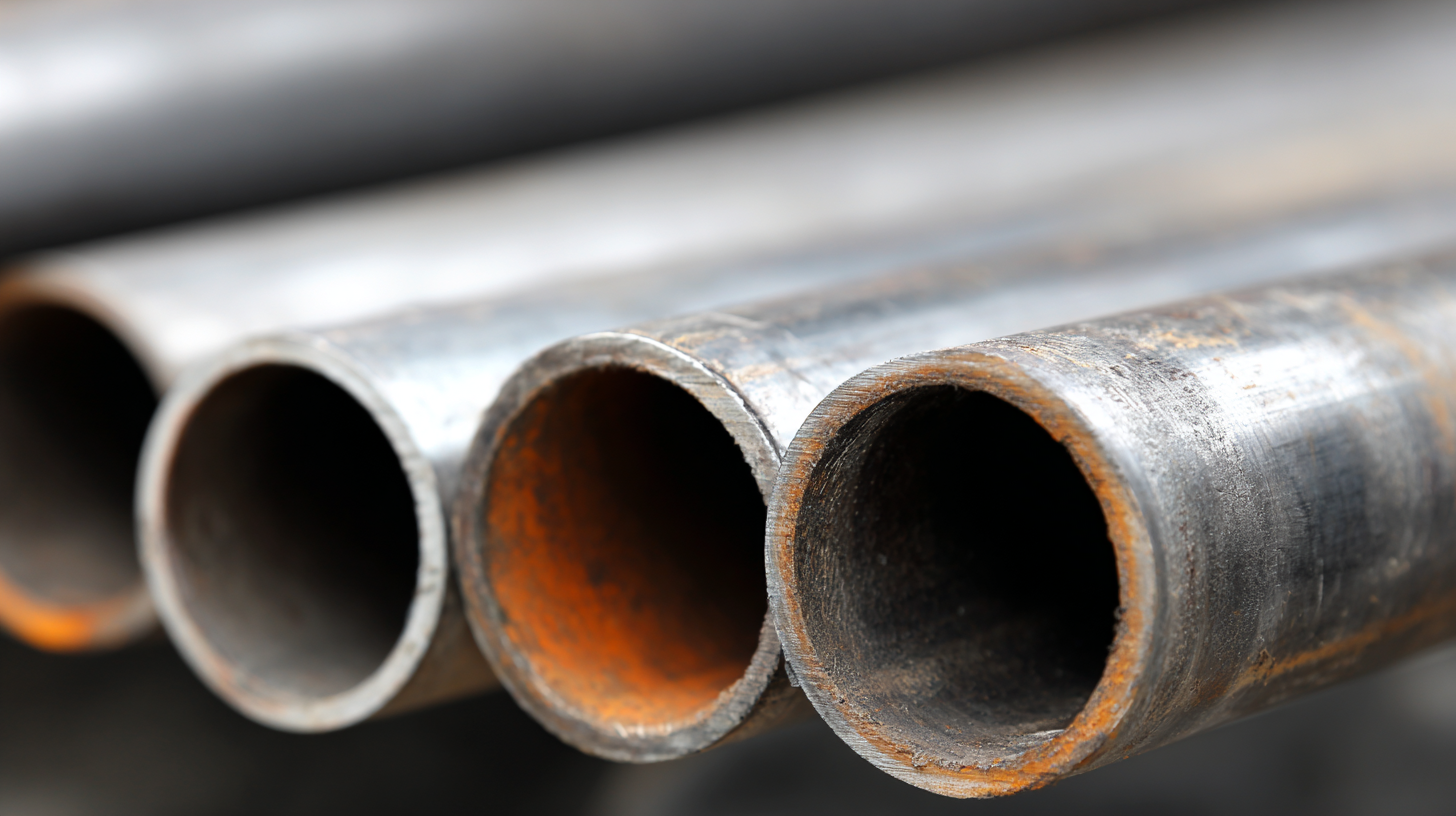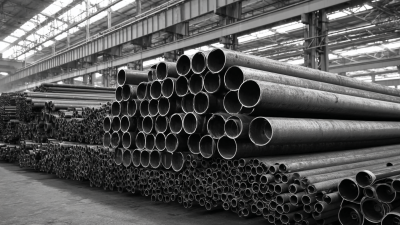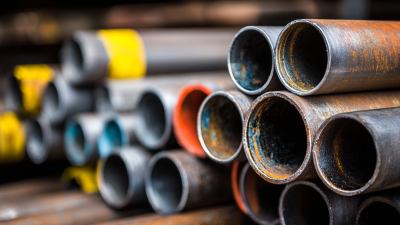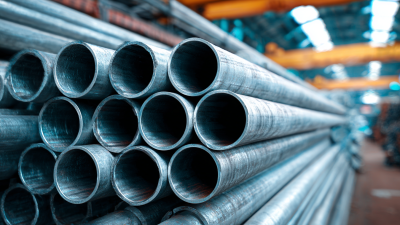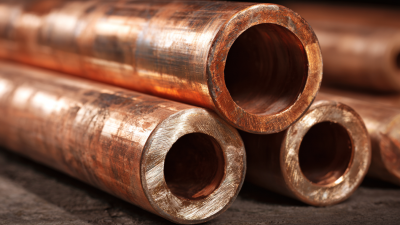Top 10 Benefits of Using Seamless Steel Tubes in Modern Construction Projects
In modern construction, the use of Seamless Steel Tubes has become increasingly prevalent due to their numerous advantages, which cater to the evolving demands of the industry. According to a recent report by the Global Steel Tubes Market, the demand for seamless steel products is projected to grow at a CAGR of 5.8% from 2022 to 2027. This growth can be attributed to the rising need for lightweight yet strong materials that can withstand high pressures and temperatures in construction applications.
Industry expert Dr. Emily Roberts, a leading authority in structural engineering, emphasizes the significance of these tubes by stating, "Seamless Steel Tubes not only enhance the durability and safety of structures but also contribute to the overall aesthetics of modern architecture." The comprehensive advantages of Seamless Steel Tubes—such as superior corrosion resistance, flexibility in design, and reduced maintenance costs—position them as a preferred choice among architects and engineers alike.
As we delve into the top benefits of using Seamless Steel Tubes in contemporary construction projects, it becomes evident that their impact on improving construction efficiency and structural integrity is substantial, reinforcing their role as a cornerstone in the future of building materials.
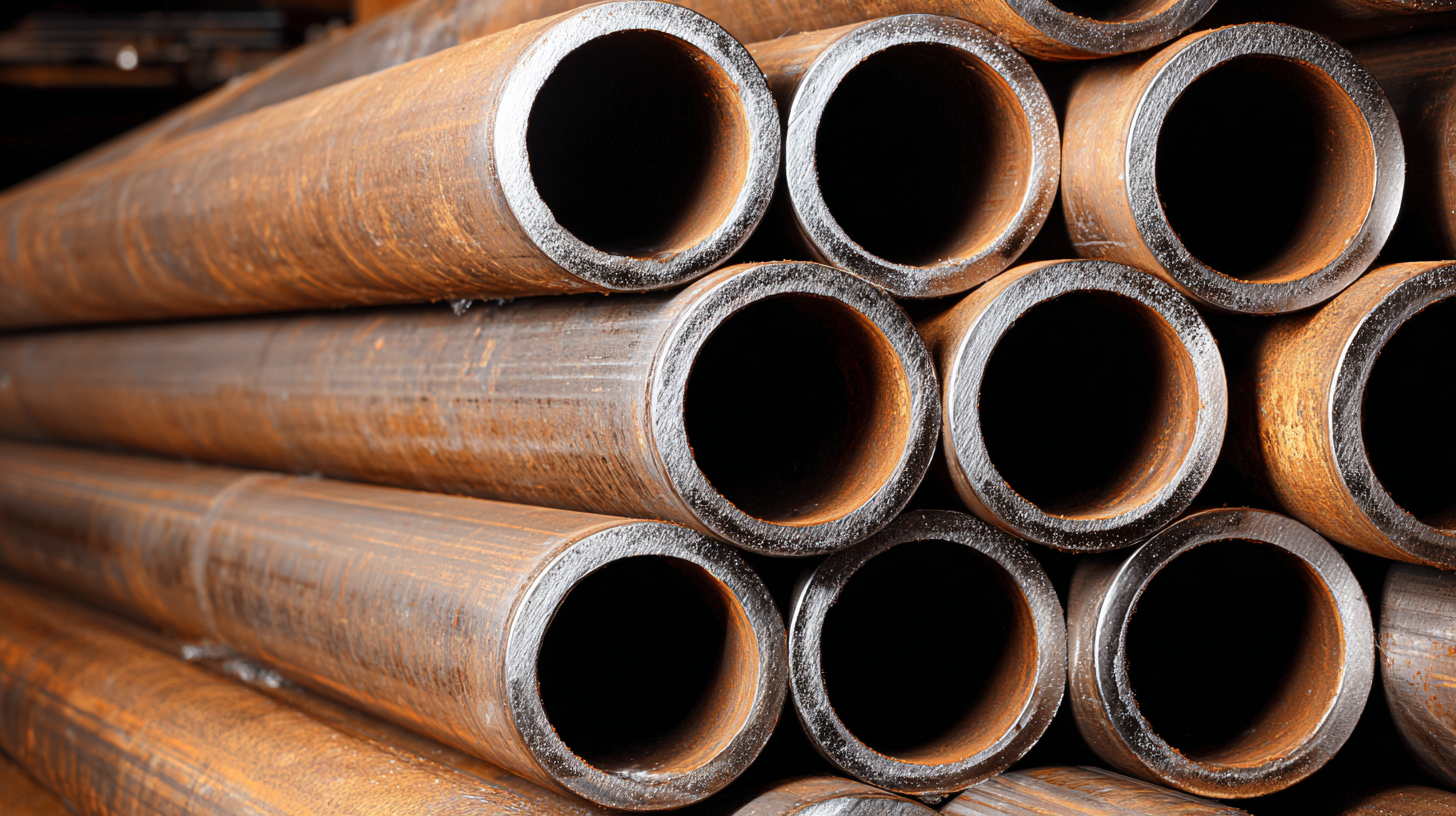
Advantages of Seamless Steel Tubes Over Traditional Materials in Construction
Seamless steel tubes have gained popularity in modern construction due to their superior properties compared to traditional materials. Unlike welded pipes, seamless tubes offer a higher strength-to-weight ratio, which allows for lighter constructions while maintaining structural integrity. This is particularly advantageous in large-scale projects where minimizing the weight of materials can lead to significant cost savings in terms of foundation and support systems.
According to a recent market analysis, the steel pipes and tubes market is expected to grow from $182.62 billion in 2024 to $297.73 billion by 2032, reflecting a CAGR of 6.3%. This growth underscores the increasing dependence on seamless steel tubes that provide durability and flexibility in design. Utilizing these materials not only enhances the overall performance of buildings but also offers sustainability benefits, as seamless tubes can be produced with less waste than their traditional counterparts.
Tips: When considering materials for your next construction project, evaluate the long-term benefits of seamless steel tubes, especially in terms of lifespan and cost-effectiveness. Additionally, explore how integrating building information modeling (BIM) methodologies can optimize the construction process by enhancing collaboration and reducing errors. Remember, choosing the right materials now can lead to significant advantages down the line, both environmentally and economically.
Enhanced Durability and Strength of Seamless Steel Tubes for Structural Integrity
Seamless steel tubes have become a pivotal component in modern construction due to their enhanced durability and strength, which directly contribute to the structural integrity of buildings and infrastructure. According to a report by the World Steel Association, seamless pipes exhibit significantly higher resistance to pressure and stress compared to welded alternatives, with tensile strengths often exceeding 550 MPa. This makes seamless tubes particularly suitable for applications where reliability and safety are paramount, such as in high-rise buildings, bridges, and industrial facilities.
The absence of weld seams in seamless steel tubes not only improves the overall strength but also reduces the potential for fatigue and failure in structural components. A study published by the American Institute of Steel Construction indicates that structures utilizing seamless tubes can withstand extreme weather conditions and seismic activity, providing an additional layer of security in design. Coupled with their corrosion resistance, seamless steel tubes are ideally suited for environments that pose challenges to conventional materials, leading to longer lifecycle costs and reduced maintenance needs over time.
Top 10 Benefits of Using Seamless Steel Tubes in Modern Construction Projects
Cost-Effectiveness of Using Seamless Steel Tubes in Large-Scale Projects
The cost-effectiveness of using seamless steel tubes in large-scale construction projects can be significant. According to a recent industry report by the American Institute of Steel Construction, seamless tubes can reduce project costs by up to 20% when compared to traditional welded alternatives. This reduction is primarily due to their superior strength-to-weight ratio, which allows for lighter structures and decreased material usage. In addition, the durability and corrosion-resistant properties of seamless steel reduce the need for maintenance, leading to long-term savings that can be crucial for tight project budgets.
**Tip:** When planning a project, consider the life-cycle cost of materials. Seamless steel tubes, while potentially more expensive upfront, may offer greater savings over time due to their longevity and lower maintenance needs.
Furthermore, seamless steel tubes are also known for their efficiency in installation. The absence of welds in these tubes means fewer construction delays, as their consistent quality allows for quicker assembly and less need for reworking. A study published in the Journal of Construction Engineering and Management reports that using seamless steel can shorten project timelines by nearly 15%. This time savings directly correlates to lower labor costs and earlier project completion, making it an attractive option for large-scale endeavors.
**Tip:** To maximize savings, collaborate with suppliers who specialize in seamless steel tubes. Building these partnerships can lead to better pricing and logistical arrangements that can further decrease costs.
Improved Design Flexibility and Aesthetic Appeal of Seamless Steel Tubes
Seamless steel tubes are becoming increasingly popular in modern construction projects, thanks to their exceptional design flexibility and aesthetic appeal. Unlike traditional welded tubes, seamless designs offer uniform strength and can be fabricated in a variety of shapes and sizes, allowing architects the freedom to push the boundaries of creativity. Reports indicate that the seamless steel tube market is expected to grow by 6.5% annually through 2027, reflecting a growing recognition of their advantages in constructing innovative structures.
One key benefit of seamless steel tubes is their ability to support complex architectural designs without compromising structural integrity. This feature is particularly beneficial in high-rise buildings and bridges, where both appearance and strength are paramount. Additionally, the smooth surface finish of seamless tubes not only enhances visual appeal but also facilitates the application of various coatings and finishes, providing even more design options. Industry studies show that buildings utilizing seamless steel tubes often yield up to 15% reductions in material costs due to reduced waste during fabrication.
**Tip:** When designing with seamless steel tubes, consider incorporating varying diameters and wall thicknesses to create visual interest and improve performance. Additionally, utilizing advanced modeling software can help visualize the final impact and ensure efficient use of materials, maximizing both beauty and sustainability in your projects.

Sustainability Benefits of Seamless Steel Tubes in Green Construction Practices
The importance of sustainability in construction is increasingly being recognized, and seamless steel tubes play a pivotal role in advancing green building practices. These tubes are manufactured without seams, which not only enhances their strength and durability but also minimizes waste during production. The manufacturing process for seamless steel tubes typically consumes less energy compared to traditional welded alternatives, making them a more eco-friendly choice. As a result, their use contributes to reduced carbon footprints in construction projects.
Furthermore, seamless steel tubes are highly recyclable, aligning with the principles of sustainable construction. When a structure reaches the end of its life cycle, these tubes can be repurposed for new applications, thus reducing the demand for virgin materials. This recycling capability not only conserves natural resources but also minimizes landfill waste. Additionally, seamless steel tubes are long-lasting, leading to decreased maintenance costs and fewer replacements over time. By integrating these materials into modern construction projects, builders can not only achieve structural integrity but also promote environmental stewardship.

Home
About Us
Products
Carbon & Carbon Alloy Steel
Stainless Steel
Copper & Nickel Alloy
Heat Efficiency Tubes
Pipe Fittings
Pipe Flanges
Gasket, Stud Bolt &Nut
Industrial Valves
Tech & Service
Blog
Contact Us



